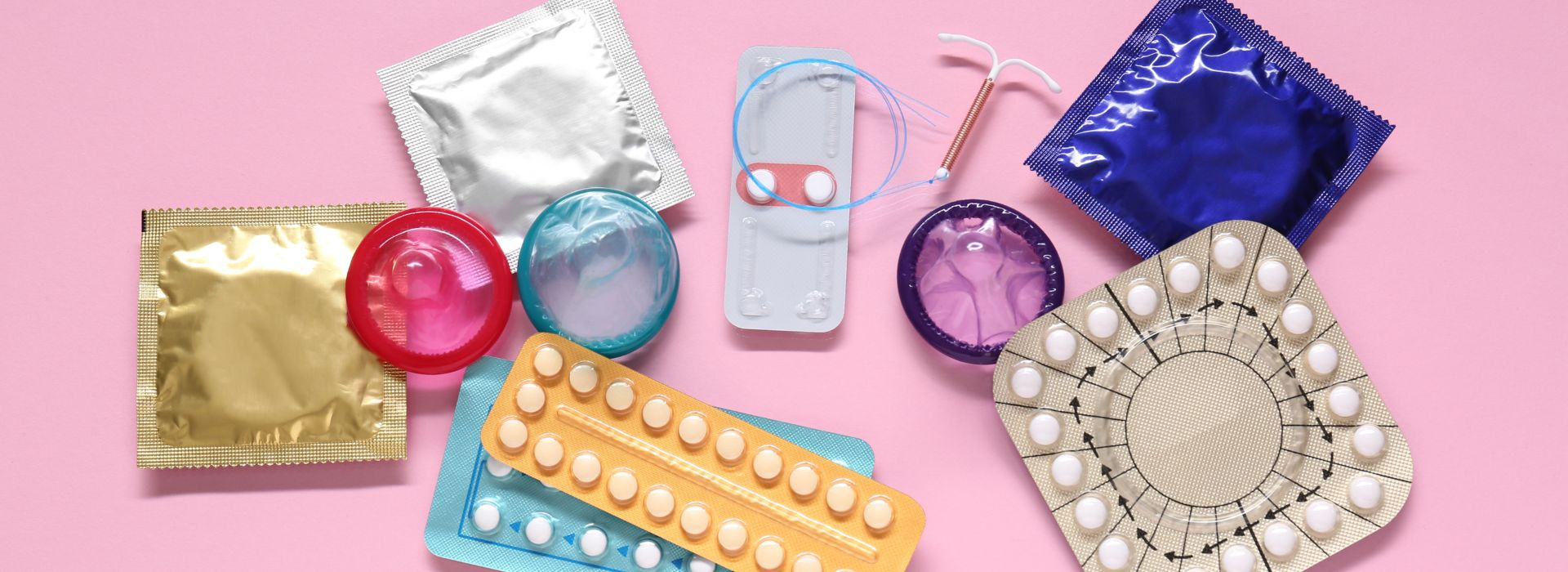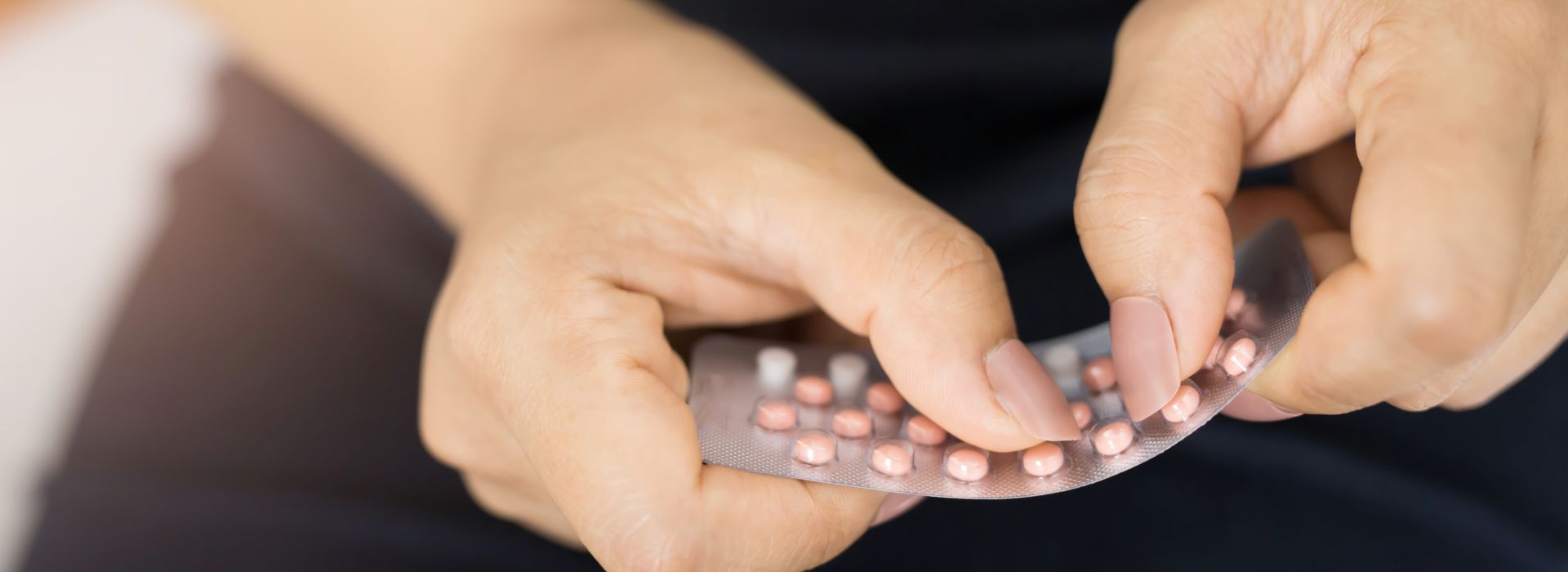Contraception Methods
Contraception advice at NUPAS
It can be hard to know which contraception to choose. At your abortion appointment, we will talk to you about contraception options. We can help you find a contraception to suit your body and lifestyle.
Fertility can return as soon as 5 days after an abortion. This means you can get pregnant again if contraception is not used. There are lots of contraception types to choose from. We can help you find a new method if your old contraception hasn’t been right for you.
At our clinics we give information and advice on the full range of contraception. We can offer a choice of four after your abortion.
We offer the following contraception at NUPAS clinics:
These methods are types of Long-Acting Reversable Contraception (LARC). LARC is highly effective at preventing pregnancy.
These methods do not protect you from sexually transmitted infections (STIs). We recommend that you also use condoms to protect against STIs. We offer all our patients condoms to take away with them.
Contraception Information
Which contraception is right for me?
We are here to support your contraception choice and give you options.
The most effective contraception is the implant. This is followed by the contraceptive coils, the injection, patches, vaginal rings, contraceptive pills and condoms.
How effective contraception is can depend on how they are used. Their effectiveness is explained by looking at perfect use or typical use. Perfect use means it is used correctly every time. Typical use is how the average person will use it. Some types of contraception can be difficult to use perfectly every time.
You can use this contraception tool to help you decide which type of contraception to try.
Some contraceptives are Long-Acting, and some are Short-Acting.
Find out more about Long-Acting and Short-Acting Contraception methods below.

Long-Acting Contraception
Long-Acting Reversible Contraception (LARC) is highly effective. This is because you don’t have to remember to take it or use it during sex. Depending on the type of method, LARC could last several weeks, or years. They are fully reversible. They can be taken out or stopped if you want to become pregnant.
The Contraceptive Implant
The implant is the most effective contraception. It is over 99% effective. Less than 1 in 1,000 users will get pregnant in the first year of use.
Once fitted, it works for 3 years. It can be taken out sooner if you choose. Fertility returns to normal very quickly once it’s removed.
How it works: A small, flexible rod is put under the skin of your upper arm. It releases a hormone called progestogen. It stops the body ovulating (releasing an egg). It thickens the cervical mucus (fluid at the neck of the womb) to stop sperm reaching an egg. It also thins the lining of the uterus (womb) to stop a fertilised egg attaching and growing.
Contraceptive Injection
The contraceptive injection has a hormone called progestogen. Using the contraceptive injection perfectly as instructed (every 13 weeks) makes it over 99% effective at preventing pregnancy. This means less than 1 in 100 people will get pregnant. With typical use the injection is 94% effective, and around 6 in 100 people will get pregnant in a year. There are two types of injection available - Depo-Provera and Sayana Press.
How it works: Depo-Provera is injected into muscle, usually the bum or sometimes in the arm. Sayana Press is injected beneath the skin at the front of your thigh or tummy with a tiny needle. You can inject Sayana Press yourself at home.
The injection releases a hormone called progestogen. This hormone stops the body releasing an egg (ovulation). It thickens cervical mucus (fluid at the neck of the womb) to stop sperm reaching an egg. It also thins the lining of the uterus (womb) to stop a fertilised egg attaching and growing.
Intrauterine Device (IUD)
An IUD is a small, plastic, T-shape device that contains copper. It is sometimes called the copper coil. The IUD does not have hormones in it. It is inserted into the uterus (womb) through the vagina and cervix (neck of the womb). The copper IUD is over 99% effective. Less than 1 in 100 users will get pregnant in a year.
Once it’s fitted it works for 5-10 years, depending on the type of IUD. It can be taken out sooner if you choose. Your fertility returns to normal as soon as it’s taken out.
How it works: The copper in the IUD stops sperm and eggs from surviving in the womb. It also changes your cervical mucus (fluid at the neck of the womb) to stop sperm from reaching an egg. An IUD may also stop a fertilised egg from attaching to the womb lining and growing.

Intrauterine system (IUS)
An Intrauterine System (IUS) is a small, plastic, T-shaped device that contains a hormone called progestogen. It is sometimes called the hormonal coil. It is put into the uterus (womb) through the vagina and cervix (neck of the womb). The IUS is over 99% effective. Less than 1 in 100 users will get pregnant in a year.
Once fitted it can be used for 3-5 years, depending on the type of IUS. It can be taken out sooner if you choose. Fertility will return once the IUS is taken out.
How it works: The IUS releases a hormone called progestogen into the uterus (womb). This thins the lining of the womb to stop a fertilised egg attaching and growing. It also thickens cervical mucus (fluid at the neck of the womb) to stop sperm reaching an egg.
How do I get contraception like this after an abortion?
All these Long-Acting methods are available from NUPAS as part of your abortion care. At your abortion appointment we will talk to you about contraception options. We can provide you with contraception and help you make plans for future contraception use.
Short-Acting Contraception
Short-Acting contraception works for the short time that you use them, or take them. This means they need regular and consistent use.
If you don’t have a usual daily or weekly routine, a Long-Acting contraception may work better for your lifestyle. Short-Acting contraception could be useful ‘bridging methods’ of contraception. This means you can use Short-Acting contraception in between using Long-Acting methods to stay protected.
Condoms
A condom is a barrier that stops sperm reaching and fertilising an egg. Condoms are worn on an erect penis. Internal (vaginal) condoms are also available. They are inserted into the vagina. Condoms are the only contraception to protect against sexually transmitted infections (STI’s).
Condoms are around 98% effective with perfect use. Around 2 in 100 people who use condoms will become pregnant in a year. With typical use, condoms are around 82% effective. This means that if 100 people used condoms for a year, around 18 of them will get pregnant.
Internal (vaginal) condoms are about 95% effective with perfect use. This means around 5 in 100 people will get pregnant in a year. With typical use, internal condoms are 79% effective. This means around 21 in 100 people a year will have an unplanned pregnancy.
Contraceptive Patch
The contraceptive patch is a small, beige patch. It is applied to the skin like a sticky plaster. It is replaced weekly. The patch releases hormones called oestrogen and progestogen.
With perfect use the patch is more than 99% effective. This means that less than 1 in 100 people will have an unplanned pregnancy in a year. With typical use it is 91% effective. Around 9 in 100 people using the patch for a year will become pregnant.
How it works: The patch stops your ovaries from releasing an egg (ovulating) each month. It thickens the cervical mucus (fluid around the neck of the womb) which stops sperm getting to an egg. It also makes the lining of the womb thinner. This means a fertilised egg wont' attach and grow.
Combined Pill
This is often called ‘the pill’. The pill contains two hormones called oestrogen and progestogen. It is taken every day, usually with a week off once a month to have a period.
The pill is more than 99% effective with perfect use. Less than 1 in 100 people will have an unplanned pregnancy in a year. But, with typical use the pill is around 91% effective. Around 9 in 100 people will become pregnant in a year.
How it works: The combined pill stops your ovaries from releasing an egg (ovulating) each month. It thickens the cervical mucus (fluid around the neck of the womb). This stops sperm getting to an egg. It also makes the lining of the womb thinner, so that a fertilised egg wont' attach and grow.

Progestogen-Only Pill
This is often called the ‘mini pill’ or “POP pill”. This pill only contains the hormone called progestogen. It is taken every day without breaks. It should be taken at the same time every day.
The POP is more than 99% effective with perfect use. Less than 1 in 100 people will become pregnant in a year. But, with typical use the POP is around 91% effective.
Around 9 in 100 people will become pregnant in a year.
How it works:
The POP thickens the cervical mucus (fluid around the neck of the womb). This stops sperm getting to an egg. It also makes the lining of the womb thinner, so that a fertilised egg wont' attach and grow. Some types of POP temporarily stop your ovaries releasing an egg (ovulation). This means that your periods may come less often or stop temporarily.
Vaginal Ring
The vaginal ring is a soft, plastic ring that goes into the vagina. It releases hormones called oestrogen and progestogen. The vaginal ring can stay in place for 3 weeks before being removed. A new vaginal ring is inserted after a ‘ring-free’ week. Vaginal rings can be used back-to-back if you want to skip a period.
The vaginal ring is more than 99% effective with perfect use. Less than 1 in 100 people will become pregnant in a year. But, with typical use the vaginal ring is around 91% effective. This means around 9 in 100 people in a year will become pregnant.
How it works: The vaginal ring releases hormones to stop your ovaries from releasing an egg (ovulating) that month. It thickens the cervical mucus (fluid around the neck of the womb) which stops sperm getting to an egg. It also makes the lining of the womb thinner. This stops a fertilised egg attaching and growing.
Emergency Contraception
If your contraception has failed or you’ve had sex without contraception, you may need emergency contraception to prevent pregnancy. The sooner you get emergency contraception, the more options you will have.
Emergency Contraception Pill
Emergency Hormonal Contraception (EHC) is often called “the morning after pill”. The emergency contraception pill can delay ovulation (an egg being released) and prevent an egg being fertilised.
There are two types of emergency contraception pill:
- Levonelle can be taken up to 72 hours (3 days) after unprotected sex.
- EllaOne can be taken up to 5 days after unprotected sex.
If you vomit within 2 hours of taking the emergency contraception pill you should get advice from a doctor or nurse.
Intrauterine Device (IUD)
Did you know that the most effective emergency contraception is an IUD? The IUD (copper coil) is more effective than the emergency contraception pill. It has a success rate of 99%. It will also give you ongoing contraceptive protection for many years after it has been fitted.
For the copper coil to be an effective emergency contraception, it needs to be fitted:
- Up to 5 days after unprotected sex
- Within 5 days of the earliest time you could have released an egg.
Is the Morning After Pill an Abortion Pill?
The morning after pill (emergency contraception pill) is not the same as abortion pills.
Abortion pills (a medical abortion) are two types of medication used together to end an existing pregnancy. These pills do not contain hormones. The first abortion pill (mifepristone) works by blocking the hormone needed for a pregnancy to grow.
The emergency contraception pill is used before a person is pregnant. It contains hormones that can delay an egg from being released. This prevents the egg from being fertilised after sex.
Where can I get Emergency Contraception?
You can get emergency contraception for free from:
- NUPAS
- Your GP
- Contraception and sexual health clinic,
- Specialist clinics like Brook
- NHS walk-in centres
- Some pharmacies
You can also buy the Levonelle emergency contraception pill from pharmacies if you are over 16. If you are under 16 you will need a prescription from a doctor to buy Levonelle.
Call Us
Are you not sure about what contraception is best for you after an abortion? Are you worried about what to do if you have had unprotected sex or your contraception has failed? Call our experienced team for advice and support on 0333 004 6666.

